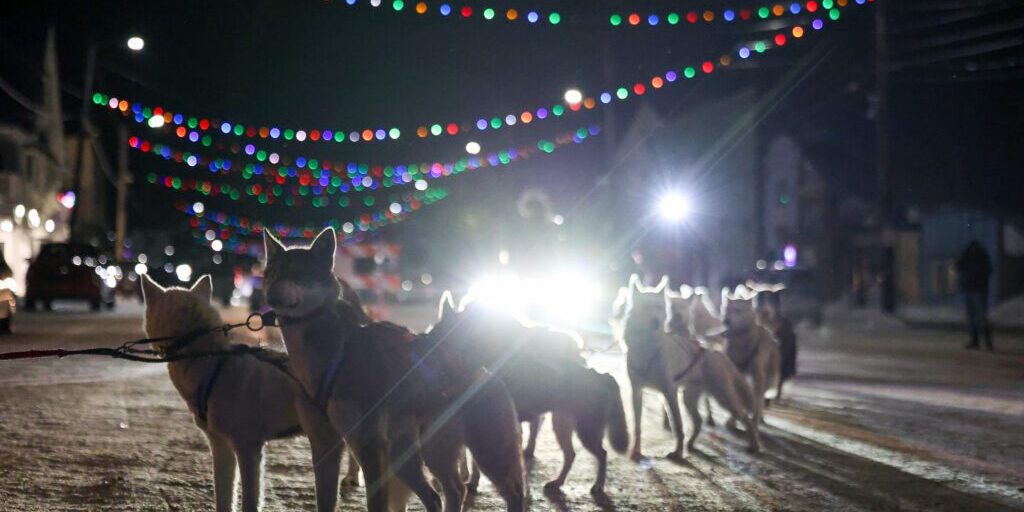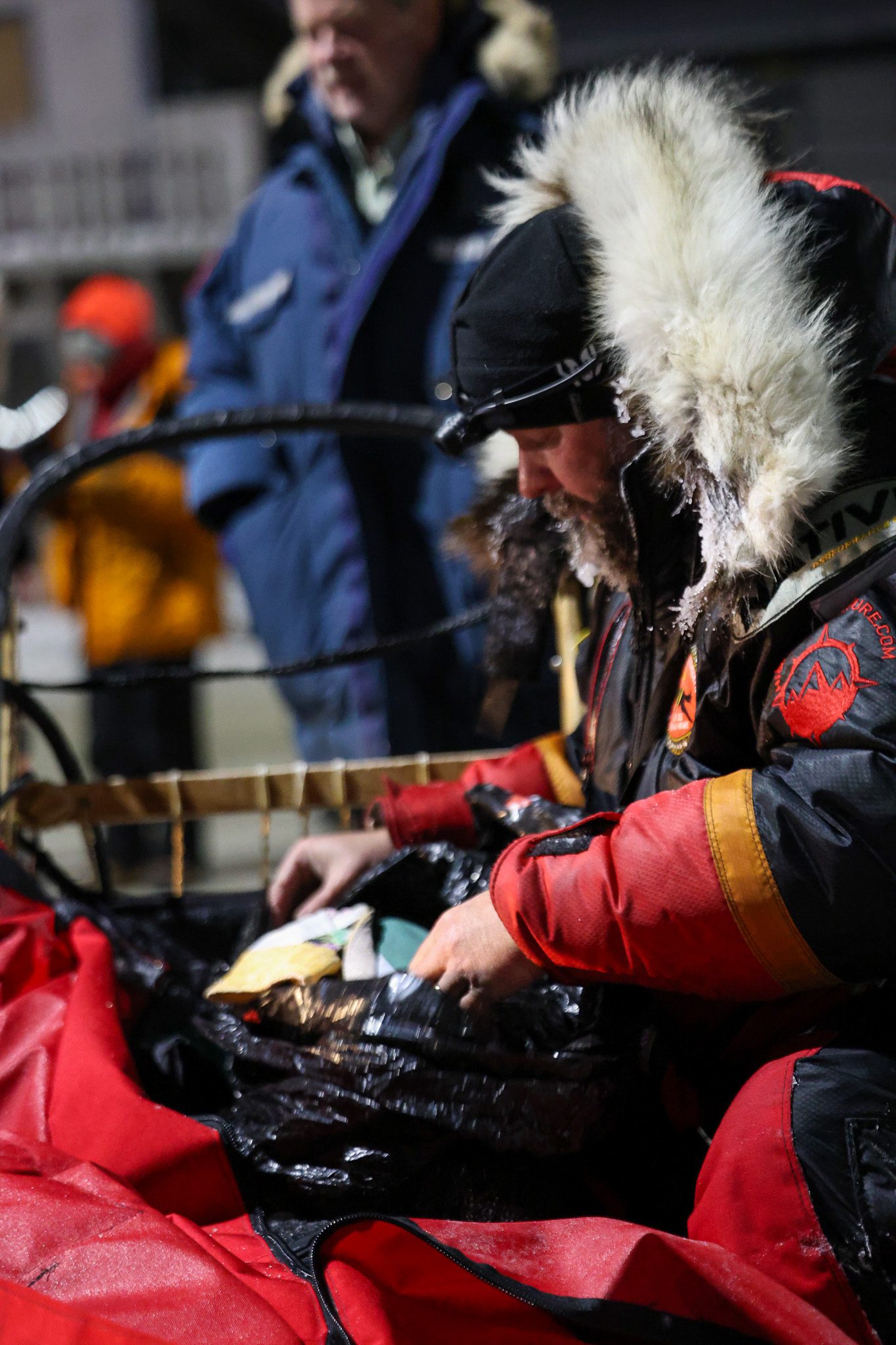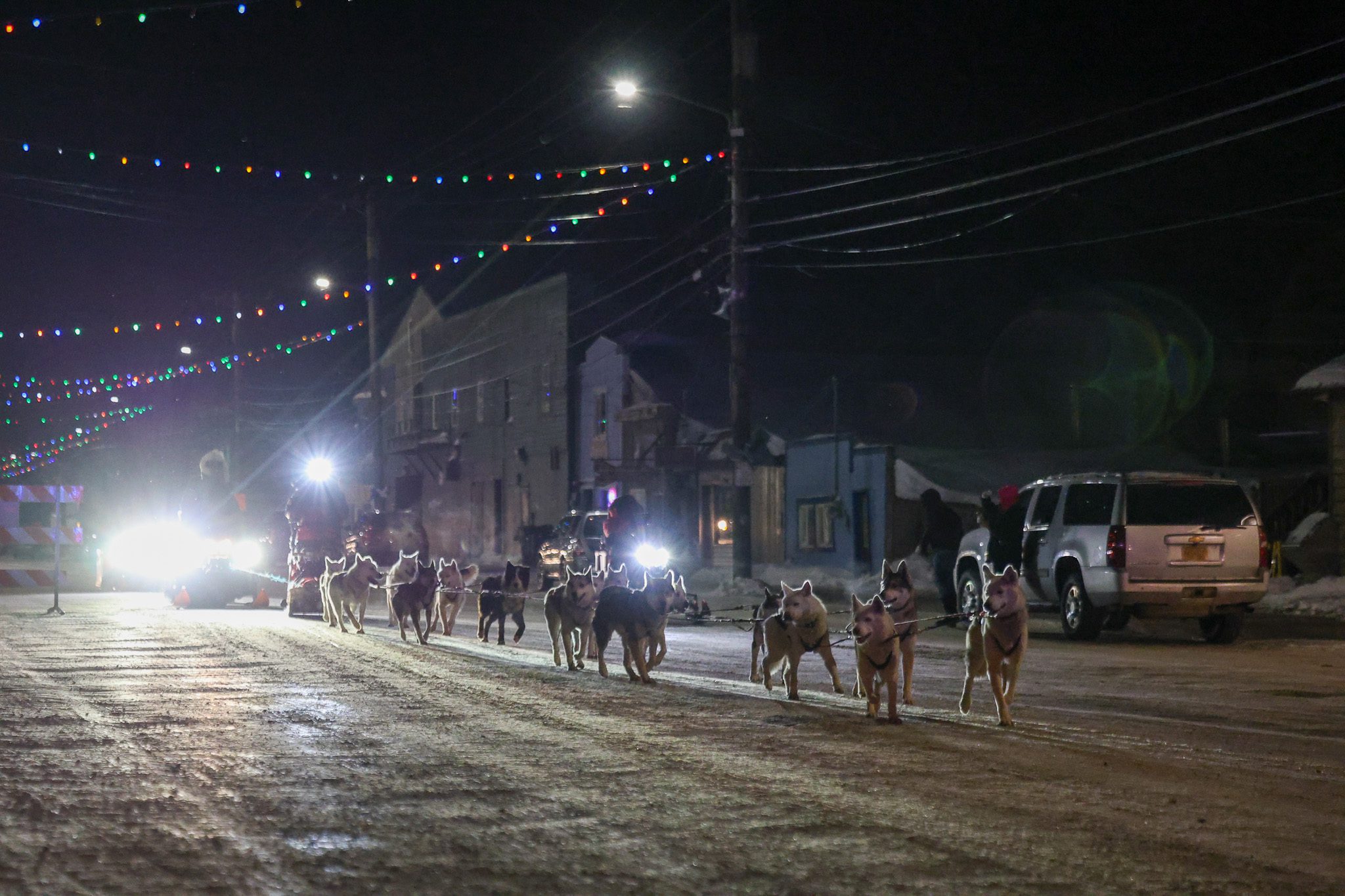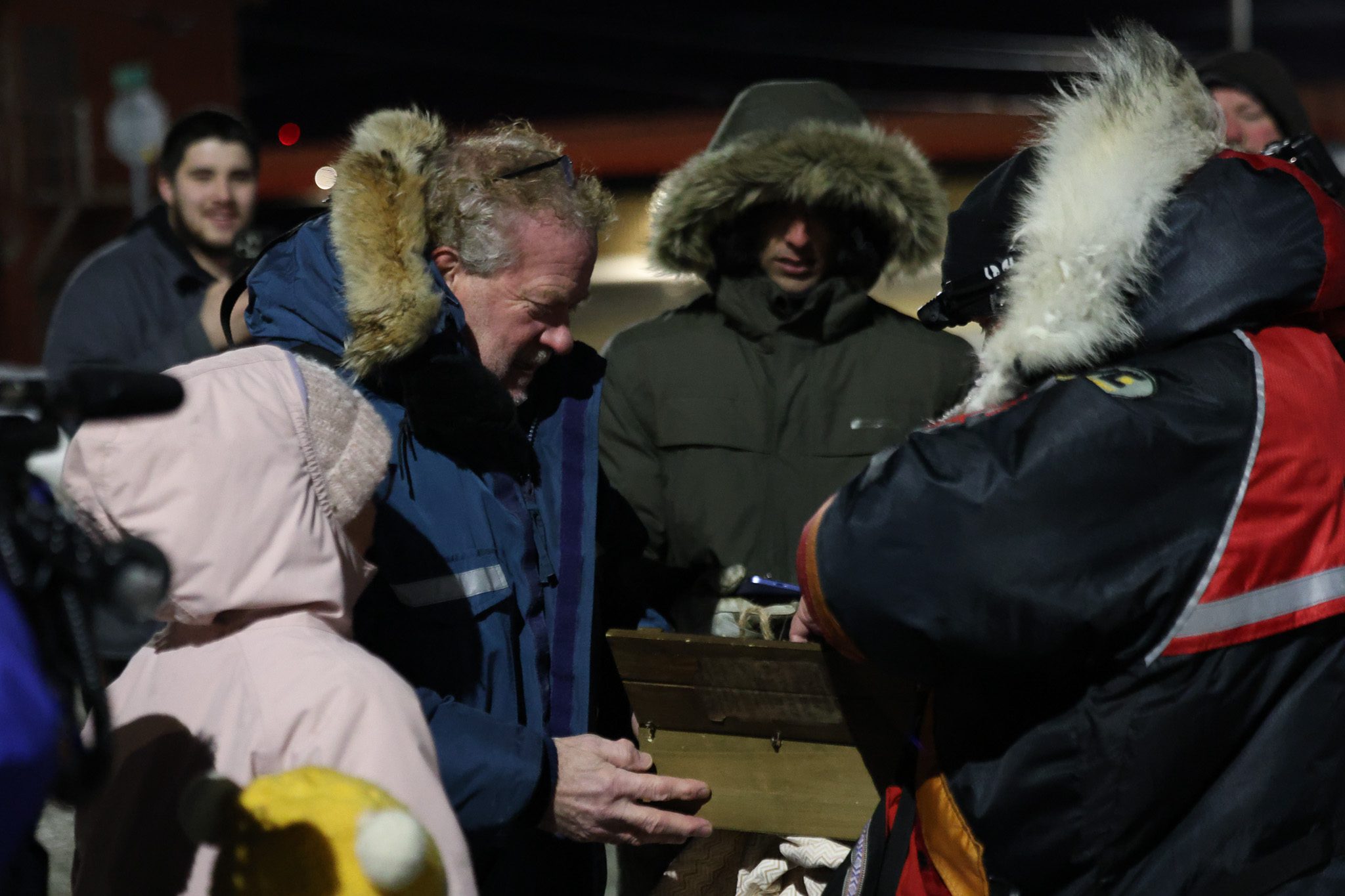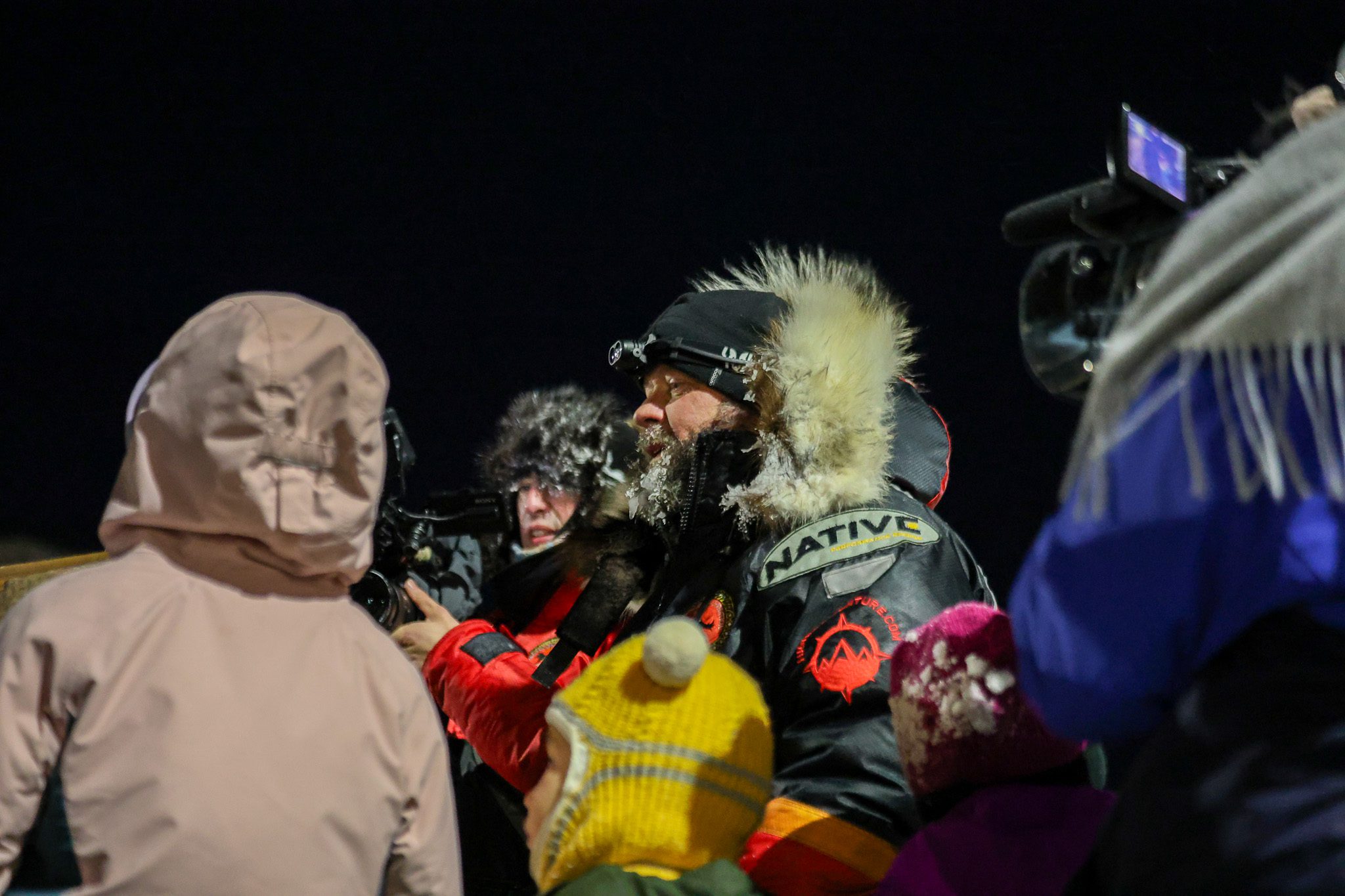Under the glow of multicolor lights strung across Nome’s Front Street, musher Jonathan Nathaniel Hayes and his dog team came to a halt.
After 23 days on the trail, Hayes instinctively threw down his snow hooks, which bounced off the icy road. Despite just completing a 750-mile run from Nenana to Nome, his 16-dog team veered to the left as the snow hooks uselessly slid across the road.
Bystanders yelled, “watch out!” as the dogs eagerly yanked on their lines to keep running.
Hayes’ crew rushed to secure both ends of the line as he dug into his sled, unfurling a blanket containing an antique wooden box. Nome’s Mayor, John Handeland, stepped forward to accept it.
“The Mayor of Nenana asked me to deliver this to you. Inside is not only a vial for every one of the nine pandemics that have hit Alaska, but in this envelope are letters from the children of Nenana to the children of Nome,” Hayes said.
“That’s beautiful, thank you so much for bringing it. This is a wonderful reenactment of what occurred 100 years ago now,” Handeland said. “It was only because of the dogs and mushers getting to the community in not so good condition that many people, many children were saved.”
Hayes is a dog musher and owner of Poland Spring Kennel in Maine. The kennel includes 22 Siberian huskies that are direct descendants of the dogs Leonhard Seppala mushed in the original Serum Run a century ago. Seppala was a resident of Nome in 1925 and played a pivotal role in delivering life-saving diphtheria serum to Nome during the infamous relay.
“They were coming home,” Hayes said. “It was really surreal that Leonhard Seppala, after the serum run, brought his dogs to Maine and then 100 years later, I brought those dogs back to Nome from Maine.”

A grueling journey from Nenana to Nome
Hayes was supported by a small crew, including filmmaker Caleb Gingra and trailbreakers Jamie Nichols and Jeff Kelly, who traveled ahead of the team on snowmachines to clear a path and prepare camp each night.
From the start, the journey was fraught with challenges. The team was delayed by an avalanche before reaching Nenana and idled on the Dalton Highway for 14 hours.
“Even before we got to Nenana, we had our reservations,” Nichols said.
On the other side of the obstruction, unseasonably low snow from a wet winter only heightened their concerns.
“Everyone was telling us, ‘The villagers aren’t even traveling right now between villages. There’s no trail, there’s overflow. You can’t start on January 27,’” Hayes said. “But that’s the centennial date. That’s what we came here to do.”
Determined to uphold the tradition, the crew set out on their journey. Their first major challenge, the Tanana River, proved especially treacherous with slushy snow and shifting ice.
“When we finally reached the river, we were like, ‘Sweet, we got seven miles. That’s a cakewalk,’” Jamie Nichols, a member of the crew, said. “We kept saying cakewalk, and it wasn’t. There was two feet of overflow on that river. The ups, the downs, the depth perception you lose out here in the gray sky—so you got to be very careful.”

As the journey continued, the team faced temperatures as low as negative 50 degrees and brutal winds. Despite the conditions, the dogs pushed on.
Hayes’ lead dogs proved to be an unflappable duo. He affectionately refers to Druid as the brawn of his operation, although he often needed his partner, Vodka, to keep the team on course.
“He's not really great with taking commands, because he's so stubborn. He just wants to go,” Hayes said. “And so that's where Vodka comes in, Vodka is the brains of the operation. She's the one who is always willing to make a turn anywhere I ask her. When you put the two of them together, usually it's a pretty unbeatable combination.”
A Life-Saving Encounter on the Yukon River
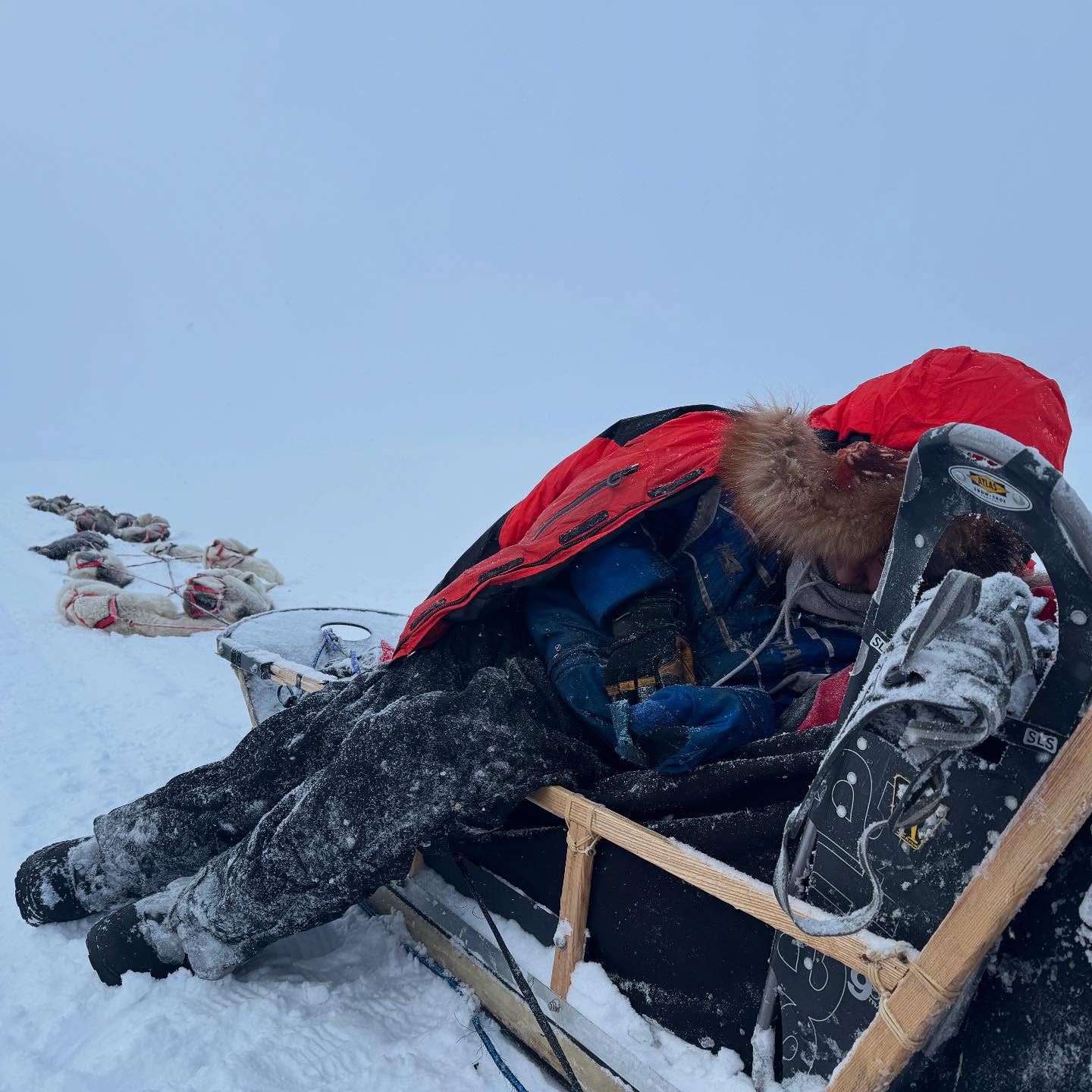
As the team mushed toward Galena, Hayes came across a stranded elder from Ruby who had been lost on the Yukon River for 24 hours. The man had lost a glove, suffered severe frostbite on his feet, and had tucked his frozen hand into his sleeve.
“When I pulled my dog sled team up beside him, this elderly man just collapsed right onto my sled,” Hayes recalled. “He chugged my coffee for the day, I put heat packs on him.”
21-time Iditarod finisher, Aaron Burmeister, gifted Hayes an anorak before starting the journey. Hayes hastily threw the layer on top of the man and used his iPhone’s emergency satellite feature to message for help.
Within 45 minutes, Alaska Wildlife Troopers arrived by snowmachine to rescue the man.
“I didn’t do anything that anybody else wouldn’t have done,” Hayes said. “I just thank God that I was there.”
Crossing Norton Sound and Facing the Blowhole
For Hayes, the toughest challenge came in the final days as the team left White Mountain and encountered Norton Sound’s notoriously relentless coastal winds.
“I’ve got, I know a lot of Iditarod mushers who are far greater mushers than I, that have had to, you know, call it quits on the coast,” Hayes said. “I had a healthy respect for that.”
The infamous Topkok blowhole east of Solomon, known for its unpredictable hurricane-force winds, nearly halted the team’s progress. The team took shelter in a small trapper’s cabin.
Even after three weeks on the trail, Hayes–whose day job is a biology teacher–worried for the health of his dogs.
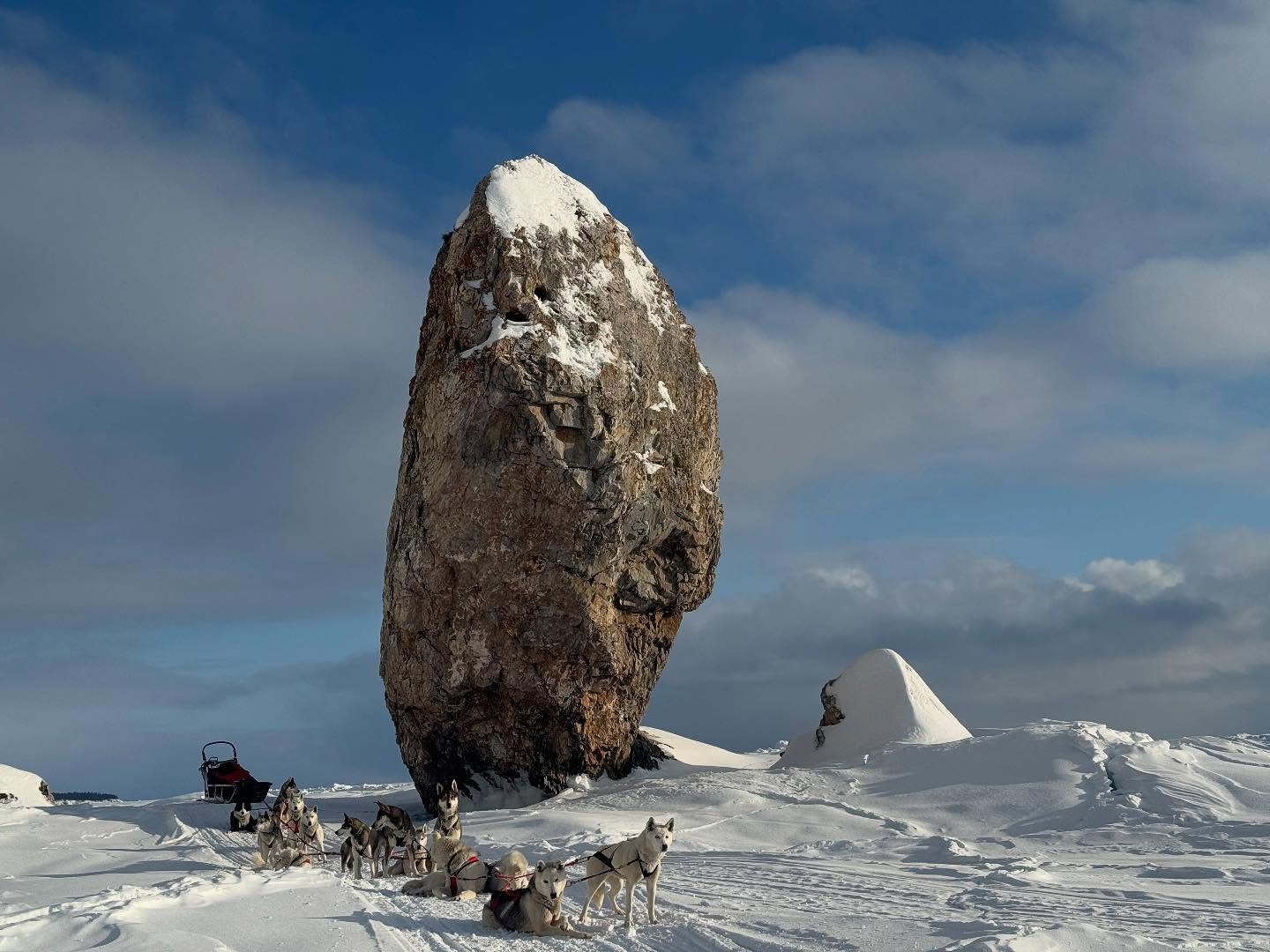
“I know that their coats, they’re going to get covered with a blanket of snow, they’re going to hunker down, they’re going to be completely comfortable under that snow, and they’re going to be fine,” Hayes said. “But my heart was like, ‘What if I wake up in the morning and I’ve got a frozen dog?’”
Unable to sleep, he decided to bring all 16 dogs into the cabin. To his surprise, they didn’t seem to mind.
“When I did, they looked at me like, ‘Seriously, dude, I was sleeping, and you brought me back into this blizzard again? Really?’” Hayes said.
A Historic Arrival in Nome
After 18 grueling days on the trail –23 including extended layovers for school visits– Hayes and his team reached Front Street, where they were greeted by a small crowd of locals and supporters. The dogs, unfazed by the journey, pulled relentlessly as Hayes clinked his snow hooks on the frozen pavement.
Amy Nichols flew from Maine to Nome to cheer on her husband on the support team. She said the team weighed doing the Iditarod trail, but decided on the Serum Run to pay homage to the kennel’s rare lineage.
“Anyone can do the Iditarod, not everybody can recreate the Serum Run with Togo's lineage,” Amy Nichols said. “Obviously we would follow them out here and be here for this moment.”
Hayes said of the 100 or so Seppala Siberian huskies dogs left, he has 22.
“These dogs are special,” Hayes said. “Keeping this breed alive and sharing their story is something I feel called to do.”
Hayes has urged Maine’s state legislature to make the Seppala Siberian husky the official state dog. The team’s next mushing event is the Can-Am 250 sled dog race, back in Maine.




